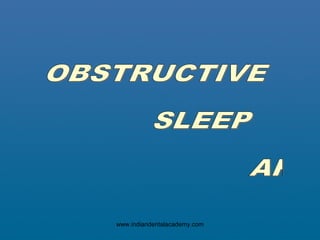The document provides a comprehensive overview of sleep apnea, defining it as a condition characterized by repeated episodes of obstructed breathing during sleep, leading to reduced blood oxygen levels. It discusses the history, symptoms, causes, types, diagnosis, and treatment modalities for sleep apnea, emphasizing the importance of awareness among patients and healthcare providers. The document concludes by highlighting the serious health risks associated with untreated sleep apnea and the need for proper evaluation and management.






























































































